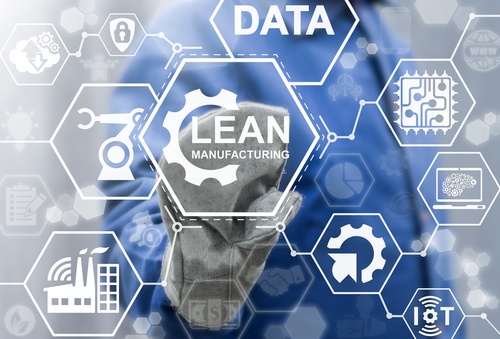 Learning about Lean systems is often exciting and motivating for organizations eager to create sustainable long-term business success. One of the first things we all learn about Lean is that it was created in manufacturing, specifically within Toyota and the automotive industry. But, for those of us in fields outside of manufacturing—healthcare, construction, education, government, software and so on— the excitement of what can be accomplished with Lean sometimes leads us to skip over some of the finer Lean manufacturing principles in lieu of taking action on things with a clearer impact on our organization.
Learning about Lean systems is often exciting and motivating for organizations eager to create sustainable long-term business success. One of the first things we all learn about Lean is that it was created in manufacturing, specifically within Toyota and the automotive industry. But, for those of us in fields outside of manufacturing—healthcare, construction, education, government, software and so on— the excitement of what can be accomplished with Lean sometimes leads us to skip over some of the finer Lean manufacturing principles in lieu of taking action on things with a clearer impact on our organization.
While selective learning can be helpful in a jargon-rich and sometimes technical field like continuous improvement, when reading about Lean and other improvement methodologies, the more Lean manufacturing principles and terms you are familiar with, the better.
Here are five Lean manufacturing principles you might not know, but might want on your radar as you read and learn more about Lean in the future:
- Muda, Mura, and Muri
These three Japanese terms come from the Toyota Production System — a method for the elimination of waste within a manufacturing system — and collectively describe wasteful practices to be eliminated. Collectively, muda, mura, and muri are sometimes referred to as “the 3Ms of Lean.”
- Muda
Muda is anything that consumes resources without creating value for the customer. The 7 wastes of Lean are all forms of Muda. The seven wastes include motion, inventory, waiting, defects, overproduction, transportation, and overprocessing, but some add additional categories like talent, resources, and by-products. Sometimes, an 8th type of waste is added - the waste of talent or human potential.
- Mura
Mura is imbalance or inconsistency in operation. While the seven (or eight) wastes are usually part of everyone’s introduction to Lean, not everyone is familiar with mura, which is an unfortunate oversight, as unevenness in operation puts unfair demands on processes and people, which then leads to the creation of muda. - Muri
Muri is the overburdening of equipment, employees, or processes by requiring them to operate too fast, with too much effort, or for longer than equipment designs and good workforce management allow. Like mura, muri can also lead to the seven wastes of muda.
- Muda
- Leveled Production
Also known as heijunka in Japanese, leveled production is smoothing out (or leveling) the type and quantity of production over a fixed period of time. It's sometimes referred to as "level loading."
The goal is to enable production to efficiently meet customer demands while avoiding the accumulation of inventory, which is a form of waste. Leveled production will also help maintain minimum inventories, capital costs, manpower, and production lead time through a value stream. Leveled production also increases an organization’s ability to respond to a customer’s special requests and large orders on time. - Just-in-time Production
Just-in-time production is the method of building what is required, when it is required, in the quantity required, and nothing more. This is in contrast to the manufacturing model of many companies before they're exposed to Lean, which is to create and hold just-in-case inventory for every possible need that may or may not arise.
The goal is to give customers the products (or services) they want, when and where they want them, at the minimum cost. Just-in-time production also forces organizations to get strategic about processes and inventory at each stage of production, cutting inventory costs. - Total Productive Maintenance
Total Productive Maintenance (TPM) is a management philosophy that strives to integrate equipment maintenance into the manufacturing process. TPM programs work to eliminate losses tied to equipment maintenance and keep equipment producing only excellent products, as fast as possible, with no unplanned downtime.
The goal is to get operators involved in proactive and preventive maintenance, empowering them while also preventing breakdowns, stops or slowdowns, defects, and safety issues. - Poka-yoke
Poka-yoke is another Japanese term, which means to error-proof processes or to prevent inadvertent errors.
The goal is to eliminate defects by preventing errors or making the error immediately obvious once it happens, so we can correct them as quickly as possible. By decreasing defects in processes, organizations can often increase the speed of processes, and enable workers to focus on other variable factors in the process.
Though all of these Lean manufacturing principles may not apply to your organization, I hope that some of these terms get your mind’s wheels turning about new and exciting ways you can eliminate waste and strive for new improvements.
For an introduction to more Lean manufacturing principles, continuous improvement resources and more please check out the KaiNexus blog, or just click “Learn” on the KaiNexus website for links to webinars, podcasts, educational videos, and tons more.


Add a Comment